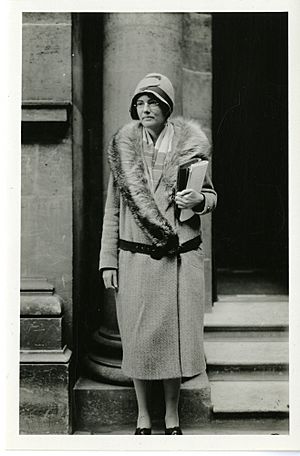Hawaiian Sugar Planters' Association facts for kids
The Hawaiian Sugar Planters' Association (HSPA) was a group of sugarcane plantation owners in the Hawaiian Islands. It started in 1882 as the Planters' Labor and Supply Company. Later, in 1895, it became the HSPA. Its main goal was to help its members and grow the sugar industry in Hawaii. One of its biggest achievements was creating the Hawaiian Sugar Planters' Association Experiment Station in Honolulu.
Contents
History of the HSPA

The HSPA was formed in 1895. It was a group of people and companies interested in the sugar industry. Before that, it was known as the Planters' Labor and Supply Company. Both groups aimed to improve the sugar industry. They also supported a special experiment station. Their goals included making sure there were enough workers. They also wanted to help agriculture in general. As the sugar industry grew, so did the activities of these organizations.
Scientific Research and Workers
The HSPA did many scientific studies. They also kept careful records about the sugar industry. This was done through the Hawaiian Sugar Planters' Association Experiment Station. This station was set up in 1895 in Makiki, Honolulu.
The HSPA managed its plantations in a special way. They offered programs to help their workers. Sometimes, this was out of care for the workers. But often, these programs also helped the plantation owners' businesses. The HSPA also used different methods to manage workers. They sometimes kept workers from different backgrounds separate. This was to make it harder for them to unite.
Bringing Workers to Hawaii
The HSPA worked hard to bring workers to Hawaii. For example, they opened offices in the Philippines. These offices were on the islands of Luzon (in Manila and Vigan) and Cebu (in Cebu City). They recruited Filipino workers and offered them free travel to Hawaii.
The HSPA became a very strong organization. Its influence reached as far as Washington, D.C., the capital of the United States. There, the HSPA successfully asked for new laws. These laws and immigration rules helped the sugar industry in Hawaii.
On March 24, 1934, the U.S. Congress passed a law called the Tydings–McDuffie Act. This law changed how Filipinos living in the United States were seen. It said they were "aliens," meaning they were not citizens. It also limited how many Filipino workers could come to the U.S. each year to only 50.
Changes in the Sugar Industry
In the 1980s, the sugar industry in Hawaii faced new challenges. A new product, high-fructose corn syrup, became very popular. This led to less demand for cane sugar from Hawaii. Even though the HSPA tried to get laws to protect the sugar industry in the U.S., cane production in Hawaii greatly decreased.
Preserving History
A big project by the HSPA was to save the records of Hawaii's sugar companies. Between 1983 and 1994, archivists were hired by the HSPA. They collected and organized records from many sugar companies. This collection is now called the HSPA Plantation Archives. It was given to the University of Hawaii at Mānoa Library. The National Wildlife Research Center Archives also has some HSPA records.
See also
- Hawaiian sugar strike of 1946

